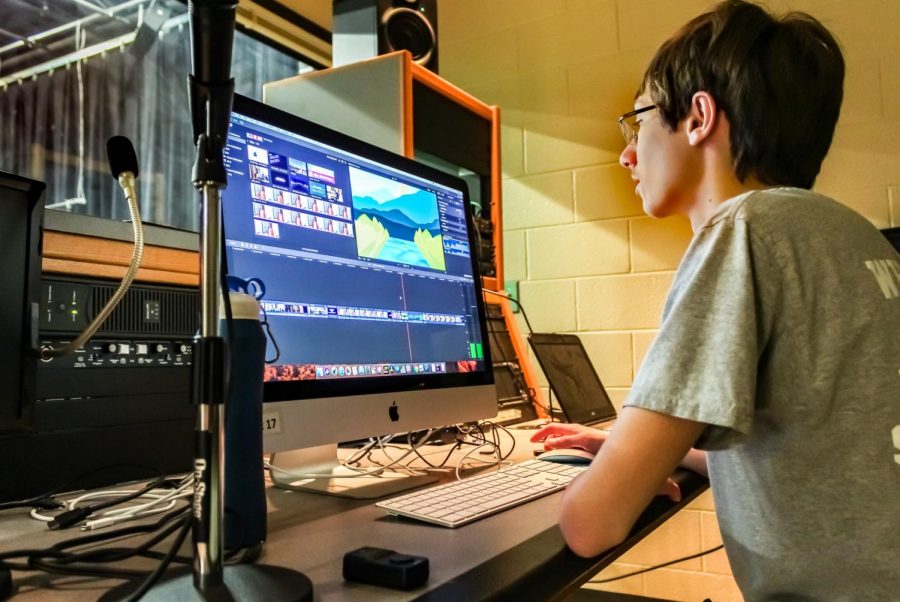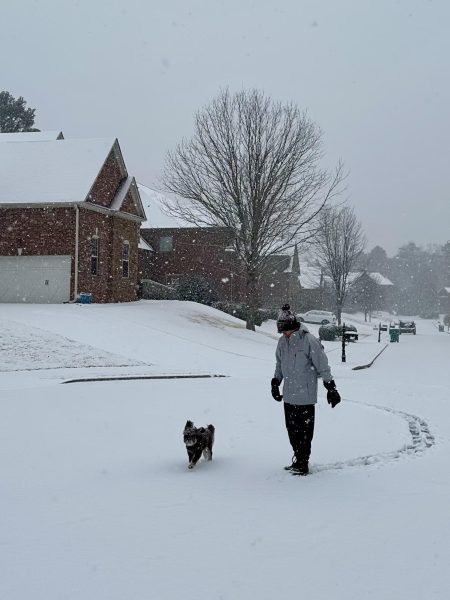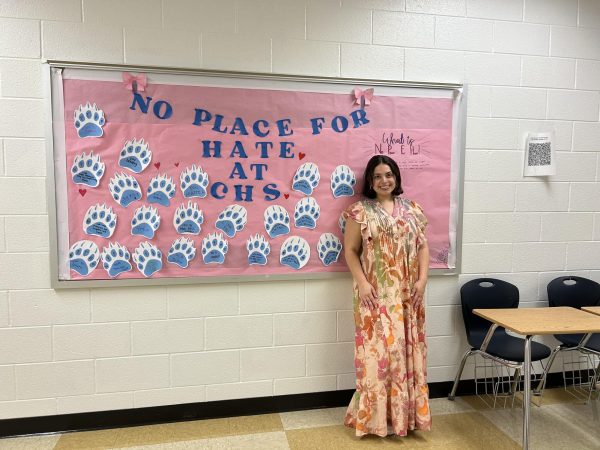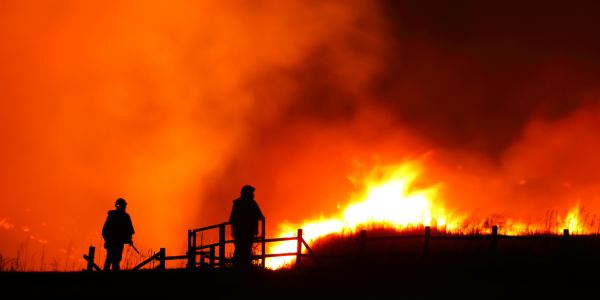“A Cambridge Institution”: Inside the Redefined World of “The Bridge”
Executive producer Jason Scerno putting together the final edit of the school’s morning program, “The Bridge.”
Outside broadcast video teacher Hal Funderburk’s office, a handful of students scurried around the classroom, occasionally popping into the office to ask for flash drives or tools. He reclined in his rolling chair, silhouetted by warm window light in his shadowy office.
It was all just a typical Thursday morning sprint to finish the next day’s show.
“The Bridge,” the school’s Friday morning news and entertainment show, is a Cambridge institution. As of last year, it has begun to transition to a more news-focused format, which has yielded mixed opinions among students.
“People got used to a certain product, and when that product changes, there is a little backlash,” said Funderburk.
Some students who remember the older format, such as senior Chris Fettes, said they miss the show’s comedic roots.
But other viewers, such as math teacher David Pomerance, said they appreciated the changes they’ve seen in the program. Pomerance said he thinks that this year “it’s more professional.”
Funderburk said student writers for the show sometimes struggle to recognize the difference between colloquial humor used amongst friends and the keen satire expected from sketch comedy.
These sketches were the cornerstone content of “The Bridge” up until 2017.
Funderburk said part of what is driving the changes to the show is the need to make it more appealing to teachers so they will be more likely to show it at the beginning of the first period.
While some teachers are choosing not to show “The Bridge” in their classrooms, the Cambridge Bears Network (CBN) is attempting to gain viewership by improving students’ production skills and re-branding the show as a vessel of information for students and teachers alike.
CBN is the highest level audio/visual (A/V) class at the school, and is the class that produces ‘The Bridge.”
Students in the class also produce many other programs that they submit to film festivals and competitions, such as the Fulton County Film Festival, SkillsUSA competitions and the National Academy of Television Arts and Sciences Southeast Emmy Awards.
Funderburk began teaching A/V classes at the school in 2017. He quickly decided to refocus “The Bridge” from a sketch show to an information-based program.
For this school year, Funderburk plans to expand CBN’s services beyond “The Bridge” to groups around the school.
He hopes to produce public service announcements and advertisements for various school organizations to give A/V students more experience at working with clients.
“That’s the fun part, the collaboration, because we view every person in this school as a potential client,” said Funderburk.
Host Morgan Perkins, a junior, and Executive Producer Claire Bowman, a sophomore, point to other initiatives CBN have undertaken to improve its content.
Perkins and Bowman said the class now learns through weekly workshops that focus on fundamental skills, such as script writing, cinematographic techniques and the proper ways to use the equipment.
Furthermore, Bowman and Perkins said the current A/V class levels are designed to improve the quality of “The Bridge” over time. Funderburk drills the lower-level classes on fundamental production skills that current CBN film crew members might not have learned as thoroughly during their time in those classes.
Funderburk notes that some A/V students were lacking in technical training when he arrived.
“What became apparent to me was that ‘The Bridge’ had been running off the talent of a few people each year,” he said.
Over time, the hope is that the skill level of the future CBN film crew will improve as these younger students make their way into the class.
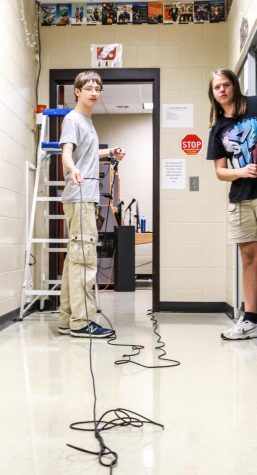
One skill Funderburk cites as a focus in his classes is achieving proper sound quality.
According to Funderburk, this is unusual for a high school video program due to the complex nature of sound equipment and software.
Funderburk said digital cameras are now much easier and more forgiving for beginners to use, so a quality video is often much easier to achieve than quality sound.
“If the audio is messed up, if the video is messed up, it just doesn’t resonate with people,” Perkins said.
CBN is also adjusting the length of its segments to convince more teachers to play “The Bridge” on Friday mornings.
According to Funderburk, CBN is trying to adjust to teachers’ schedules by limiting the primary part of the program to 10 minutes. After that is “Primetime”: the sketch segment that retains the original comedic blueprint of “The Bridge.”
Over the course of this year, Funderburk hopes these changes will cement “The Bridge” as a necessary source of information for students and teachers — a sort of town crier for the school.
Funderburk said that the improvements have already had an effect; he has occasionally spotted students watching “The Bridge” on their own time by using the links on CBN’s website.
“If the product is there, and it’s good enough, then people will turn on their TV and watch,” said Funderburk.
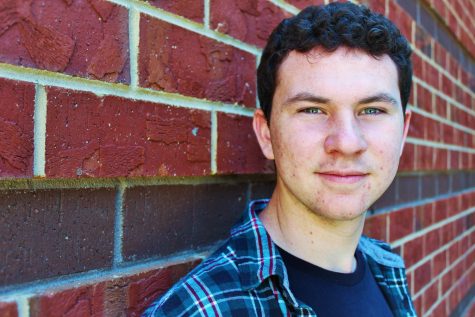
Whittall is a senior, a first-year reporter, and serves as the Lead Photographer for The Bear Witness. He enjoys going to the movies with friends, playing...

